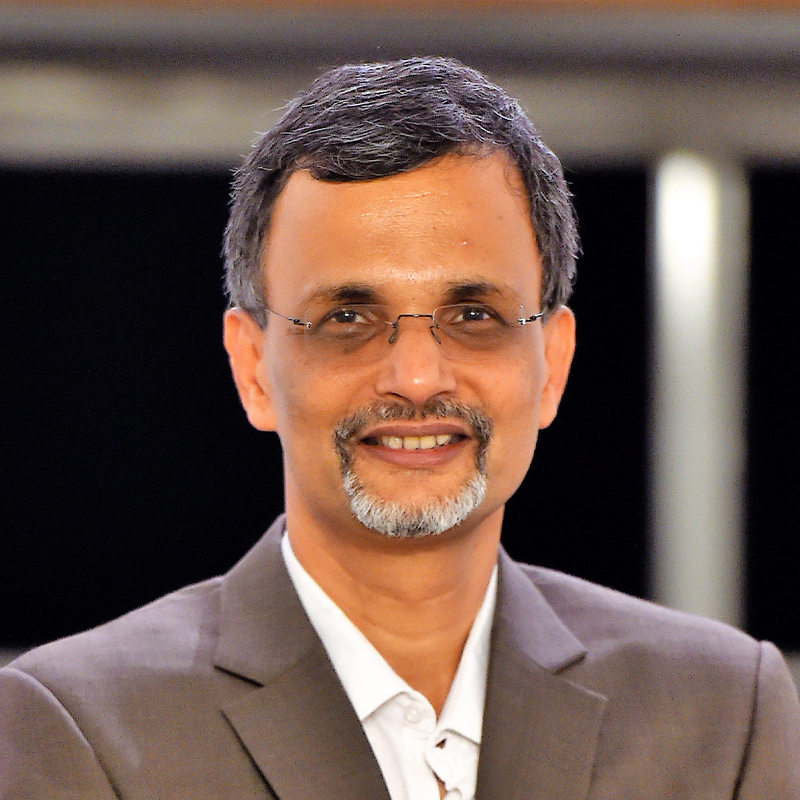Discover more about S&P Global’s offerings
Achieving high and sustainable growth has been elusive for India; success will require reaping the demographic dividend, boosting private investment and increasing competitiveness.



Published: August 3, 2023
The macro challenge for India in the upcoming decade is to turn traditionally uneven growth into a high and stable trend. Given structural differences with East Asian economies, India will need to follow its own unique path.
Capital accumulation will drive India’s economy toward this desirable path, with the government and, increasingly, the private sector investing in infrastructure and manufacturing. Digital infrastructure is another potential driver of high growth.
Success will ultimately depend on India’s ability to reap its demographic dividend; increase labor force participation, including upskilling; boost private investment, with structural reforms in land, logistics and labor; and increase competitiveness, driven by foreign direct investment. Geopolitics could provide considerable tailwinds.
I
ndia has come out of the pandemic reasonably well, with GDP growth of 7.2% in fiscal year 2023 (ended March 2023). Expansion may cool to 6% in fiscal 2024 due to a global slowdown and the lagged effect of policy rate hikes by the Reserve Bank of India, according to S&P Global. Even at this rate, India will be the fastest-growing economy in the G20.
The trillion-dollar question is whether India can sustain high growth. That is, can it replicate the performance of the East Asian tigers over recent decades and improve the prospects and opportunities for its large and growing workforce? Importantly, India’s economy is more domestically driven and services-orientated than the East Asian tigers, so its path to success will have to be different.
Our answer to the sustained growth question is a conditional “yes.” We expect India to grow 6.7% per year from fiscal 2024 to fiscal 2031, catapulting GDP to $6.7 trillion from $3.4 trillion in fiscal 2023. Per capita GDP will rise to about $4,500.
Capital accumulation will be the dominant driver of Indian growth. Investment as a proportion of GDP reached a 10-year high of 34% in fiscal 2023. The government has played a key role in boosting investment by offering substantial support for infrastructure projects and by incentivizing manufacturing. We expect the Indian private sector to gradually increase investments given healthy corporate balance sheets.
The importance of capital is made clear using growth accounting. We expect capital to contribute 53% of India’s 6.7% average GDP growth through the end of the decade. That dwarfs a 17% contribution from labor, the other main factor of production. Increases in productivity will generate 30% of GDP growth.
The growth contribution from productivity will be higher than in previous periods due to the creation of physical and digital infrastructure in conjunction with efficiency-enhancing reforms. India will likely see further efficiency gains from reforms such as the introduction of the Goods and Services Tax. Further progress in implementing the Insolvency and Bankruptcy Code would also help to drive a healthy credit culture.
Physical and digital infrastructure enhancements will support growth. Physical infrastructure is improving connectivity and lowering logistics costs for industries. Digital infrastructure will continue to speed innovation, improve payment systems and reduce leakages from government subsidy transfers. Moreover, India has used its G20 presidency to highlight its digital public infrastructure success and to encourage action on enhancing financial inclusion in other countries.
Balance of Manufacturing and Services in GDP and Exports
Even with India recalibrating toward manufacturing, services will maintain a strong role in the economy. The country needs to keep a sharp focus on both sectors as each has opportunities in domestic and export markets. In manufacturing, new growth avenues may emerge from an accelerating global trend toward supply chain diversification, the government’s Production-Linked Incentive (PLI) schemes and improving physical infrastructure. Service sector growth will be driven by domestic demand as well as global outsourcing.
The Indian consumer market will more than double by 2031, surging to $5.2 trillion from $2.3 trillion in 2022, according to S&P Global Market Intelligence’s Global Consumer Markets Service. This rapid expansion reflects a growing population and increasing household incomes. Consumer spending on food will rise to $1.4 trillion by 2031 from $615 billion in 2022. Spending on financial services will climb to $670 billion from $280 billion. Higher per capita incomes will also likely boost discretionary spending in areas such as entertainment, communications, restaurants and hotels.
Services’ share of GDP will continue to rise, along with manufacturing. Gains for services will be fueled by exports in information technology and IT-enabled services, along with domestic sectors such as retail, food services, trading, finance and healthcare. The question is whether India can generate employment and productivity growth from services at levels similar to those once achieved by manufacturing countries in East Asia.
The question is whether India can generate employment and productivity growth from services at levels similar to those once achieved by manufacturing countries in East Asia.
Services will remain India’s export growth engine. The sector’s share of total exports has already risen to 42% in fiscal 2023 from about 30% in fiscal 2012. We expect this trend to continue, reflecting the government’s latest trade policy (2023) setting a target to boost overall exports to $2 trillion by 2030. Rising comfort with remote work worldwide and the growth of global capability centers in India will stoke services exports.
India has seen a good, if uneven, record of growth over the past three decades. Expansion has come in fits and starts, and it has generally been lower and less sustained than in the East Asian tiger economies. The challenge over the next decade — and beyond — will be to create the conditions for sustained growth. Achieving this will likely require structural reforms in three key areas.
1) Raise labor participation, especially among women, and boost skills.
India is failing to take full advantage of its large and growing working-age population. Upskilling workers and increasing the number of people holding jobs will boost growth. Labor force participation was just 55.2% in 2022, and only about 32.8% among women, according to the government’s Periodic Labour Force Survey. Some of the attempts being made to deregulate labor markets at the state level could also improve participation and efficiency.
2) Lift private investment in manufacturing.
India’s domestic market is the third largest worldwide in purchasing power parity terms, which provides opportunities for growth in private manufacturing. Expanding manufacturing has been a long-standing aspiration for the country. Still, manufacturing’s share of GDP has only risen to about 18% from 15% over the past two decades. By contrast, services’ share has leapt to 55% from 45%.
Manufacturing has been held back by stringent labor laws, subpar logistics and poor infrastructure. The authorities are fast-forwarding infrastructure and logistics developments in a bid to ease bottlenecks. Labor laws and the land-acquisition process are also being gradually eased.
India, like a growing number of economies, is using an interventionist industrial policy to attract manufacturing investment. Its PLI schemes cover 15 sectors, such as electronics, automobiles, steel, renewables and pharmaceuticals.
3) Bolster external competitiveness through FDI.
India has become an increasingly attractive location for multinationals across a range of industries. Gross foreign direct investment (FDI) inflows reached a record $84.8 billion in fiscal 2022, according to the Ministry of Commerce and Industry. FDI inflows into manufacturing surged 76% that year to more than $21 billion. Gross FDI inflows were just $4.3 billion in fiscal 2004. Technology-related FDI has become an important source of investment. The computer software and hardware sector was the largest recipient of FDI inflows in fiscal 2022.
A massive domestic market, along with gradually improving global competitiveness, is helping India draw foreign investment. The country has one of the largest domestic markets worldwide, and growth is poised to surpass most other emerging nations.
Growth in FDI inflows over the past decade has boosted India’s foreign-exchange reserves and helped to lower its external account vulnerability.
A massive domestic market, along with gradually improving global competitiveness, is helping India draw foreign investment.
Geopolitics can potentially provide considerable tailwinds for India’s growth efforts. The country is in a good geopolitical position, which will help it benefit from supply chain diversification and reshoring. This will likely bolster other growth-enhancing strengths, particularly competitiveness.
Still, geopolitical volatility can be a challenge. India is pursuing a pragmatic approach, cooperating and competing to serve its national interest. This means it is navigating changing partnerships and an evolving landscape. Deglobalization and protectionist measures will also create some headwinds for exports. Trade partnerships could help to mitigate some of these effects.

What is India’s growth target, and how do you plan to achieve it?
The Indian economy, in real terms, needs to grow annually at 7% to 7.5% until 2030. On the supply side, the share of manufacturing in total gross value added has to increase from 16% at present to at least 25% of GDP at the expense of agriculture and low-value-added services. On the demand side, gross fixed capital formation, or investment, needs to increase from about 28% of GDP to at least 35%. To fund the increasing investment, the domestic savings rate will need to be about 36% of GDP. Development of the manufacturing sector and the nature of demand will generate significant employment opportunities, facilitate business opportunities and improve overall growth potential. This, in turn, will reduce poverty and increase the equitability of income distribution.
Which areas have high growth opportunities for India?
The manufacturing sector is a key growth area that India needs to exploit, given its comparative advantage in terms of skilled labor, improved physical infrastructure, well-established industrial ecosystem and large domestic market. Key industries should be identified to reap demographic dividends and to take advantage of foreign companies’ desire to diversify their supply chains.
The composition of services should change in favor of high-value-added services, as this will improve earnings by attracting foreign demand. Hospitality is one area where high-value-added services need to be developed. Another is healthcare and elderly care, including traditional and modern medicines. The elderly care sector has shown strong growth in advanced economies with an adverse dependency ratio. India can reap the benefits of this because of its favorable demographics.
Higher education is a further target for growing high-value-added services. Least Developed Countries represent the largest share of incoming international students in India because of our price-competitiveness. However, India needs to expand its higher education institutions by encouraging competition and improving quality.
Achieving rapid growth in high-end manufacturing and high-value-added services requires an overarching and supportive ecosystem. This means there is a sustained pace of expansion in digital infrastructure, along with a significant upscaling of research and development in both the public and the private sector. It also requires a skilled and tech-savvy workforce.
How can India boost private investment?
The investment rate (gross fixed capital formation/GDP) needs to increase from about 29% to at least 35%. The private sector, including foreign direct investment, must drive up the investment rate as the government has limited fiscal space. Key steps in achieving this include the development of the domestic corporate bond market as well as deploying well-targeted fiscal incentives to attract investment. Government investments should focus on infrastructure and public goods that will further facilitate and stimulate private-sector investment.
Net exports also need to improve from about negative 3.7% of GDP to a more balanced figure. This can be done by creating export markets for high-end manufacturing and high-value-added services.
What will it take to increase the savings rate in India?
A higher investment rate and smaller current account deficit (owing to improved net exports) should create a higher savings rate. The increase also depends on inflation remaining under control, as this will minimize the pressure on household budgets. The government needs to show fiscal prudence. There also needs to be efforts to improve financial inclusion and financial literacy to facilitate the understanding and application of financial instruments in savings and investment decisions.
Rider in the storm
Safe zone vibes
Credit Ratio edges up, some headwinds ahead
Next Article:
India’s Demographic Dividend: The Key to Unlocking Its Global Ambitions
This article was authored by a cross-section of representatives from S&P Global and in certain circumstances external guest authors. The views expressed are those of the authors and do not necessarily reflect the views or positions of any entities they represent and are not necessarily reflected in the products and services those entities offer. This research is a publication of S&P Global and does not comment on current or future credit ratings or credit rating methodologies.
S&P Global keeps certain activities of its business units separate from each other in order to preserve the independence and objectivity of their respective activities. As a result, certain business units of S&P Global may have information that is not available to other S&P Global units. S&P Global has established policies and procedures to maintain the confidentiality of certain non-public information received in connection with each analytical process.